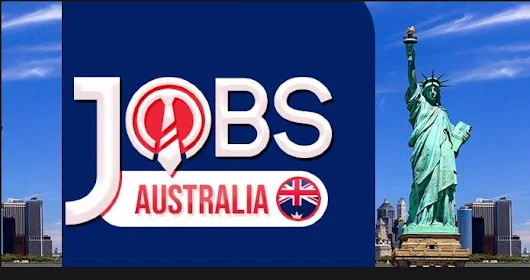Jobs, Australia
Synopsis - Australia is opening its doors wider to skilled
international workers in June 2025 due to critical labor shortages across
multiple sectors. From healthcare to IT, construction, education, agriculture,
and more -- demand is high, and the Australian government is actively
encouraging foreign professionals to apply for work visas. If your profession
matches the official Skilled Occupation List, this could be your pathway not
just to employment, but also to permanent residency.
Your
Opportunity to Work and Settle in Australia – Explore the Most In-Demand Jobs
in 2025
Key Highlights
· Australia
faces major workforce shortages in healthcare, IT, engineering, education, and
agriculture.
· Eligible
skilled workers can apply under multiple visa categories like Subclass 189,
190, 491, and more.
· High-paying,
long-term job roles are open in both metro cities and regional areas.
· A
successful visa application depends on qualifications, skills assessment,
English proficiency, and more.
Australia’s Ongoing Demand for Skilled Workers – June 2025
Outlook
Australia continues to be one of the top
destinations for professionals seeking better career prospects and a high
quality of life. With an expanding economy and aging workforce, the country is
currently dealing with shortages in critical sectors. In response, the
government has updated its Skilled Occupation
List and is welcoming global talent to help meet this demand.
If your occupation is listed, you may qualify
for a work visa -- and potentially permanent residency --depending on your
credentials and experience.
Why Australia Has a Skill Shortage
Several factors contribute to this ongoing
workforce gap:
·
A rapidly aging population and retiring
workforce
·
Rapid industry growth across multiple sectors
·
Limited domestic graduates in key professions
·
Expansion in regional and infrastructure development
As a result, foreign professionals are being
actively sought to fill essential roles across urban and regional Australia.
In-Demand Job Sectors and Roles (June 2025)
1. Healthcare and
Aged Care
Australia’s healthcare system urgently needs
skilled professionals across hospitals, aged care homes, and mental health
services.
High-demand roles
include:
·
Registered Nurses
·
General Practitioners
·
Midwives
·
Aged Care Workers
·
Physiotherapists
·
Psychologists
·
Radiologists
·
Medical Scientists
·
Occupational Therapists
·
Sonographers
2. Information Technology (IT)
The tech sector is booming, especially in
digital infrastructure, cloud computing, and cybersecurity.
In-demand roles:
·
Software Engineers
·
Cloud Engineers
·
Cybersecurity Experts
·
Data Analysts
·
ICT Business Analysts
·
DevOps Engineers
·
IT Project Managers
·
Web Developers
·
Network Administrators
3. Construction and Engineering
Australia is investing heavily in housing and
infrastructure.
Urgently needed
professionals:
·
Civil, Electrical, and Mechanical Engineers
·
Quantity Surveyors
·
Architects
·
Project Managers
·
Bricklayers, Plumbers, Carpenters
·
Building Inspectors and Electricians
4. Education Sector
Shortages are critical in schools, especially
in rural and remote areas.
Roles in demand:
·
Primary and Secondary School Teachers
·
Special Needs Educators
·
ESL (English as a Second Language) Teachers
·
Early Childhood Educators
·
Vocational Trainers
5. Agriculture and Farming
This essential sector offers both seasonal and
permanent jobs, particularly in rural zones.
Key roles:
·
Farm Managers
·
Agricultural Technicians
·
Animal Handlers
·
Horticulturists
·
Dairy & Crop Farmers
·
Fruit Pickers (seasonal)
·
Shearers
6. Hospitality and Tourism
With tourism rebounding, there's strong demand
in service sectors.
Vacancies include:
·
Chefs and Cooks
·
Pastry Chefs and Bakers
·
Baristas and Wait Staff
·
Hotel and Resort Managers
7. Transport and Logistics
Logistics support is vital for Australia’s
economy, especially in regional areas.
Top roles:
·
Truck, Train, and Bus Drivers
·
Delivery Drivers and Freight Handlers
·
Logistics Coordinators
·
Forklift Operators
8. Trades and Technical Jobs
These skilled trades continue to have serious
shortages.
Needed positions:
·
Welders and Metal Fabricators
·
Automotive Electricians and Mechanics
·
Air-conditioning Mechanics
·
Panel Beaters
·
Cabinetmakers and Glaziers
·
Floor Finishers
Visa Pathways for Skilled Workers
If your job appears on the Skilled Occupation
List, here is how to get started:
1.
Check
your eligibility – Age, English language ability, health, and
character requirements
2.
Skills
Assessment – Verified by relevant authority in Australia
3.
English
Test – IELTS or PTE for language proficiency
4.
Expression
of Interest (EOI) – Submit through Australia’s SkillSelect
portal
5.
Invitation
to Apply – If selected, you will receive an invitation
6.
Visa
Application – Lodge your complete visa application
7.
Health
& Police Checks – Final verification step
8.
Receive
Visa Decision – Await approval
Benefits of Working in Australia
·
Excellent salary packages
·
Safe, diverse, and high-quality lifestyle
·
Career growth and learning opportunities
·
Access to world-class healthcare and education
·
Pathways to permanent residency
·
Strong work-life balance
Challenges You Might Face
·
High living costs in major cities
·
English language and skills assessment
requirements
·
Adapting to new workplace culture
·
Initial time and cost investment in visa processing
Preparation and expert guidance can help
overcome these challenges.
Looking Ahead
Australia’s need for skilled workers is not
temporary --it’s part of the country’s long-term strategy for growth and
sustainability. Healthcare, technology, education, construction, and trades
will remain priority sectors for migration. Staying updated with skills, and
being flexible to work in regional zones, can significantly increase your
success rate.
If you are a skilled professional looking for global career opportunities,
Australia offers a promising future. Whether you're in healthcare, IT,
construction, education, or trades --now is a great time to explore Australia’s
evolving job market and secure your path toward permanent settlement.






